After having a most interesting day observing birds the day before, but missing seeing or photographing a particular bird, I again headed down to the Tempe Wetlands early in the morning.
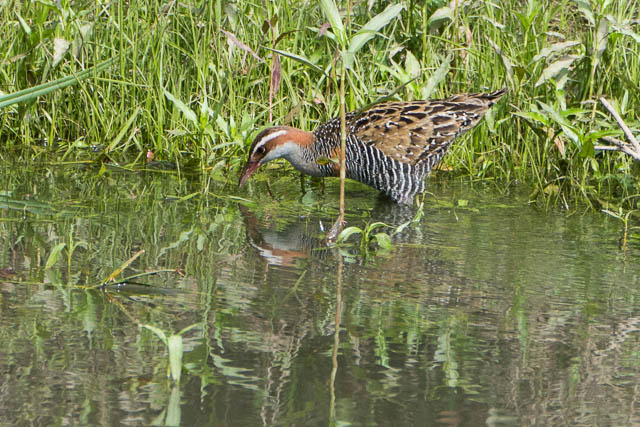
Buff-banded Rail
My main objective was to try and spot the Rail that I had missed the day before. It had been seen by quite a few members of the Tempe Birdos, but no one had photographed it, so its identification was not certain.
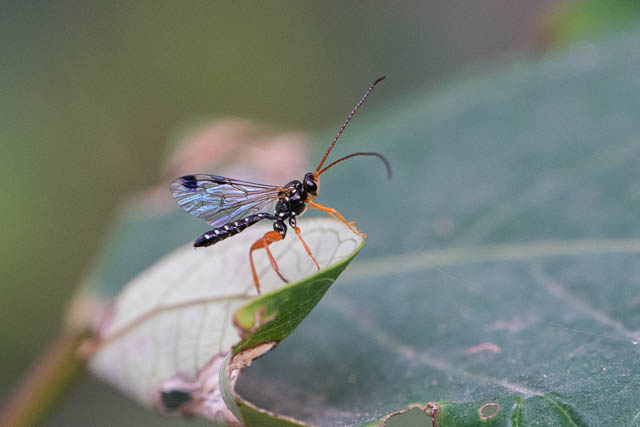
Perhaps an Ichneumon Wasp
I arrived about 8 am and went straight to the upper pool and sat waiting to see if the rail would come out again. I waited a while – but no show.
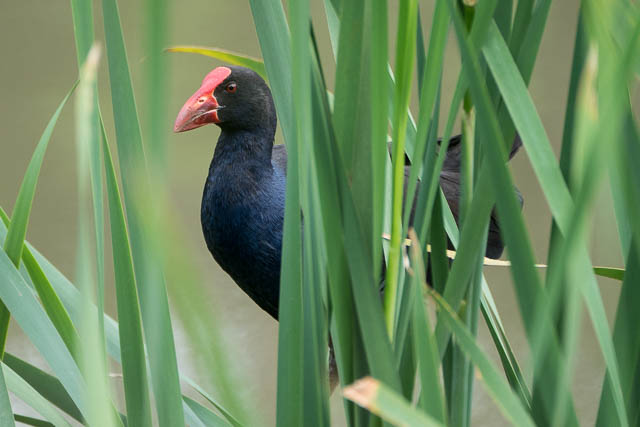
I got a bit restless and started looking for other birds to photograph. One bird I spotted, I think could perhaps be a young Spotted Pardalote.
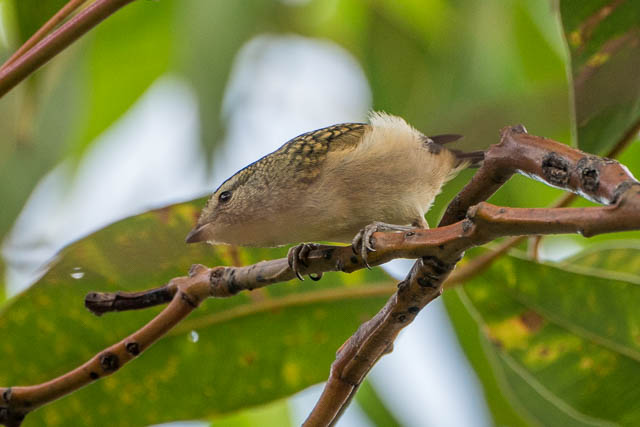
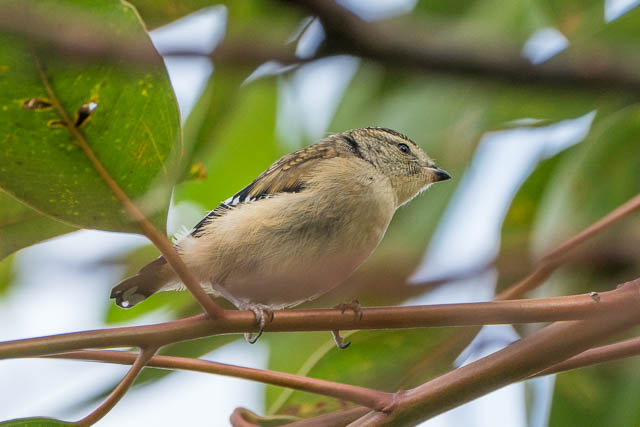
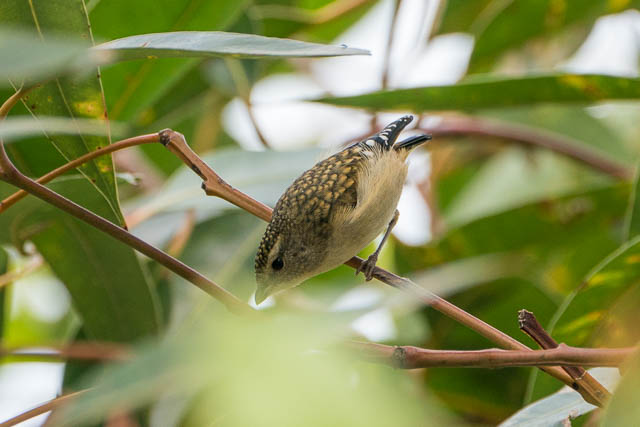
Nearby, on the path was a number of very recent holes that some animal had made –
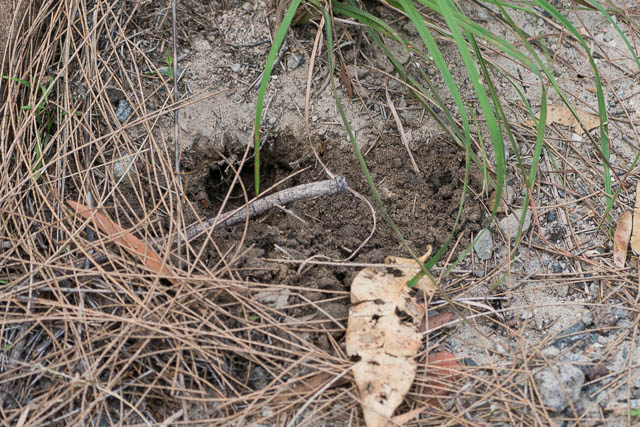
I know Spotted Pardalotes make nesting holes, but they make them in banks, not on level ground (as far as I know).
A little later I noticed a Red-browed Finch with a bit of grass (Blowngrass (Lachnagrostis sp.) seed head – thanks to Roger Lembit for this id) in its beak.
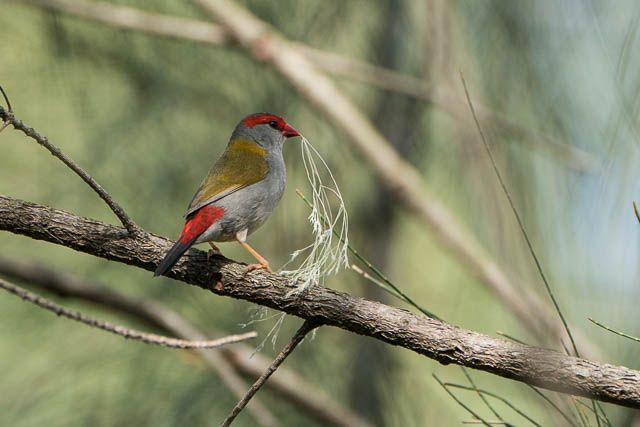
Then another flew up close to it. What happened next was very interesting to observe – some incredible courtship behaviour. The one with the blade of grass started jumping up and down of the branch and then hitting the other bird with the grass. This went on for a while. Then I am not sure if they either swapped positions or swapped the grass – but the hitting and jumping continued, and then the bird with the grass jumped onto the back of the other one.
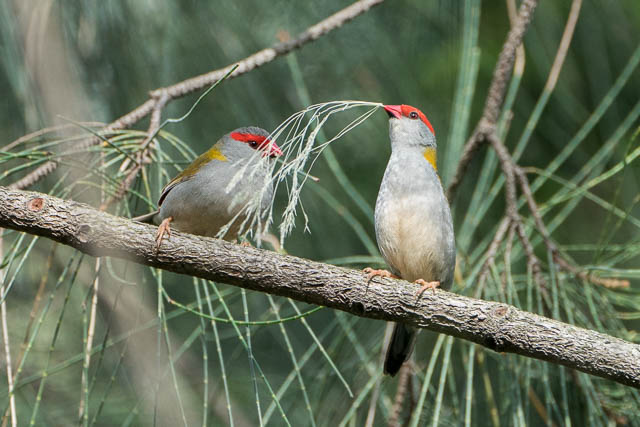
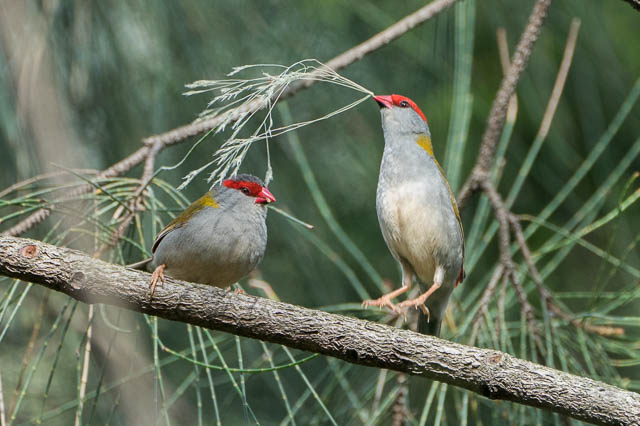
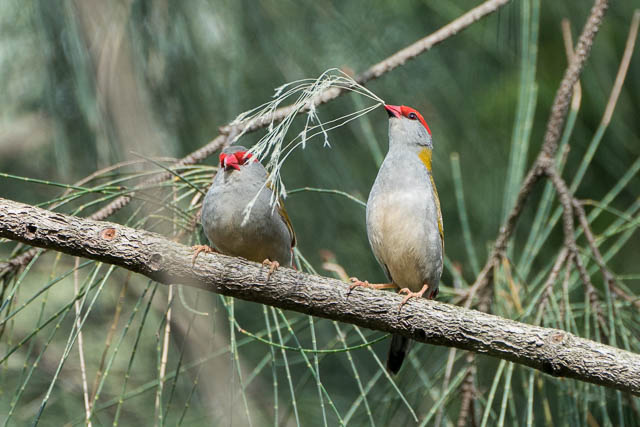
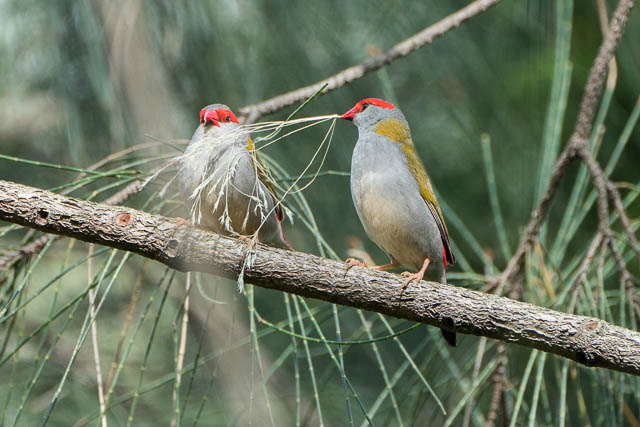
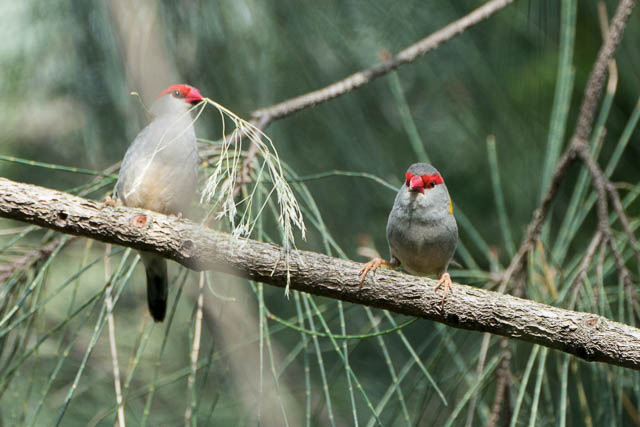
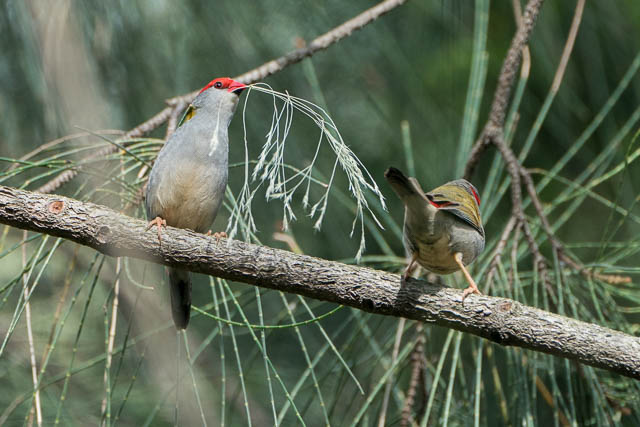
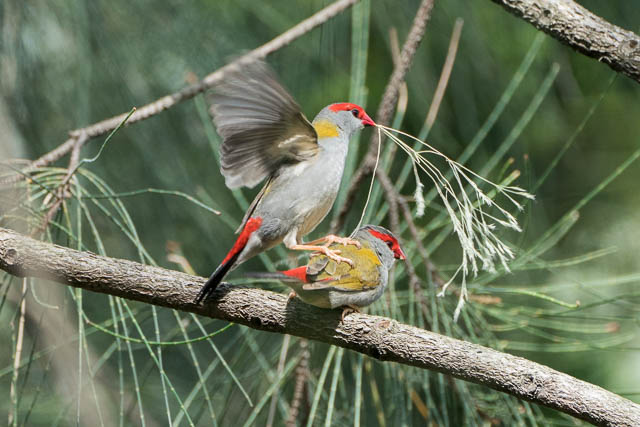
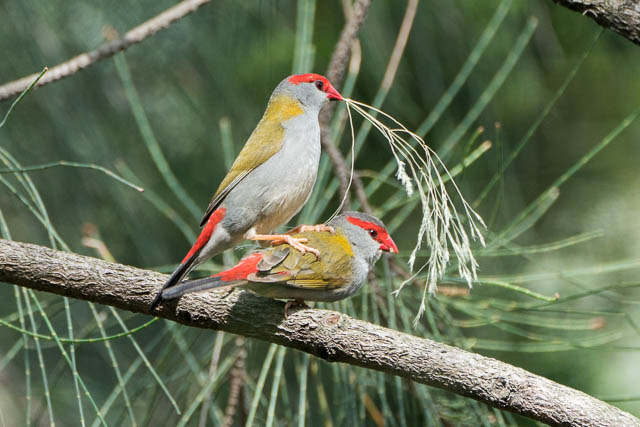
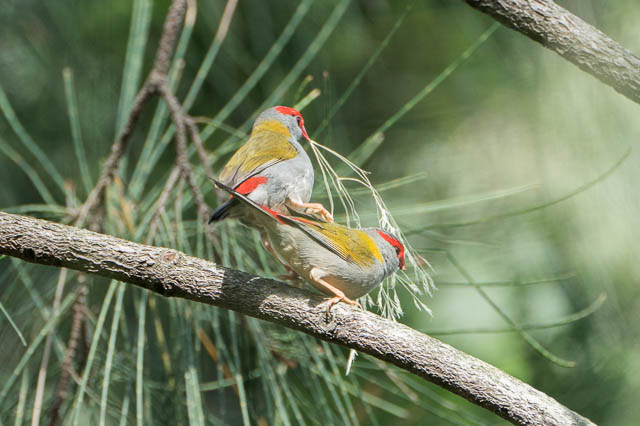
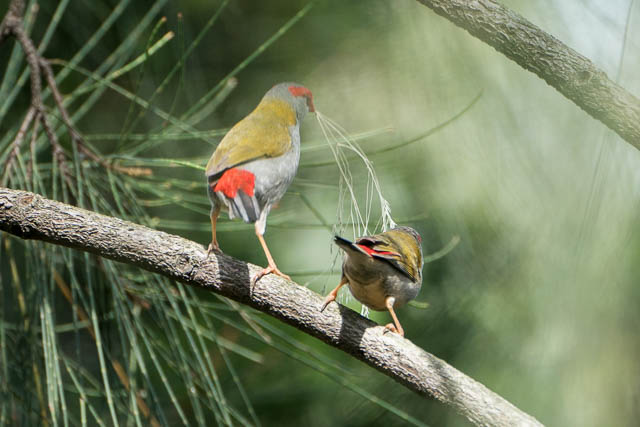
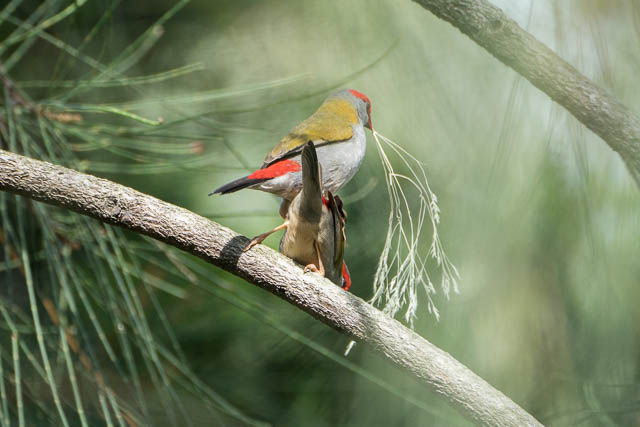
I also saw a Black Faced Cuckoo Shrike and some Superb Fairy Wrens –
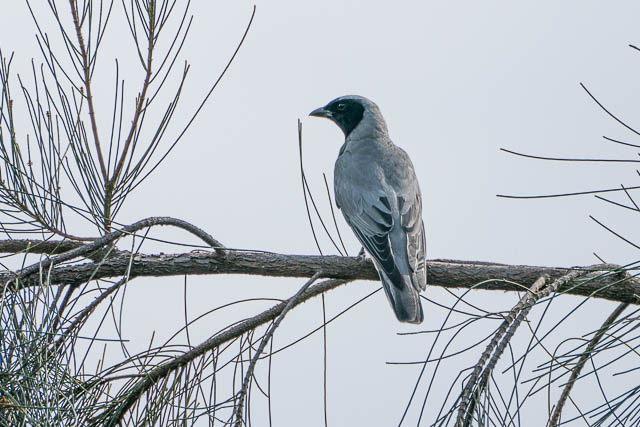
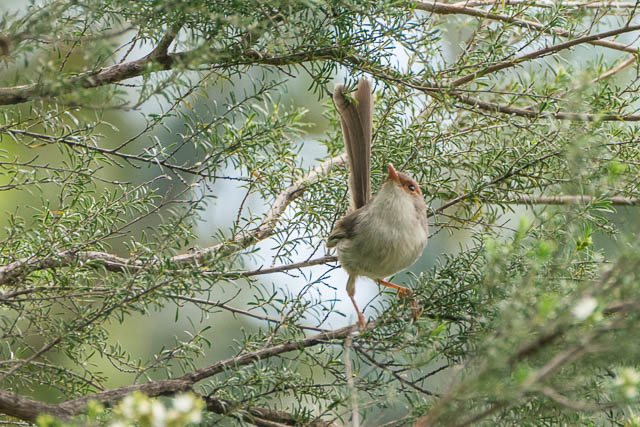
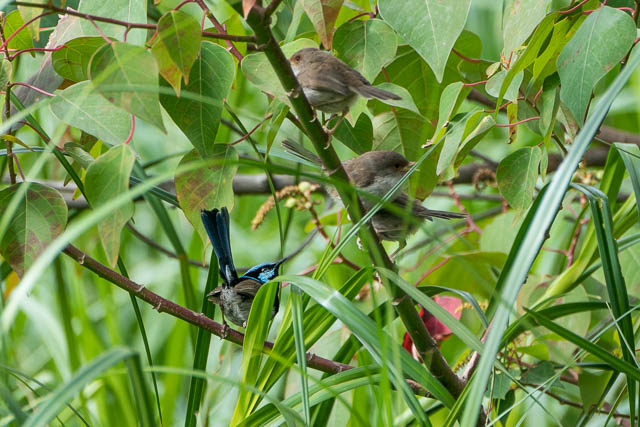
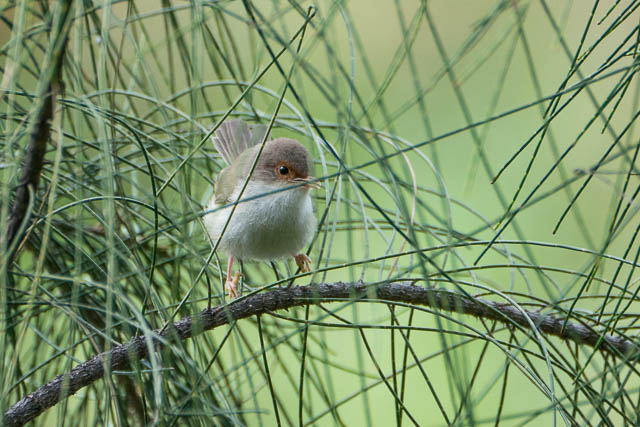
I wandered around the Wetlands and next observed a nice White Plumed Honeyeater –
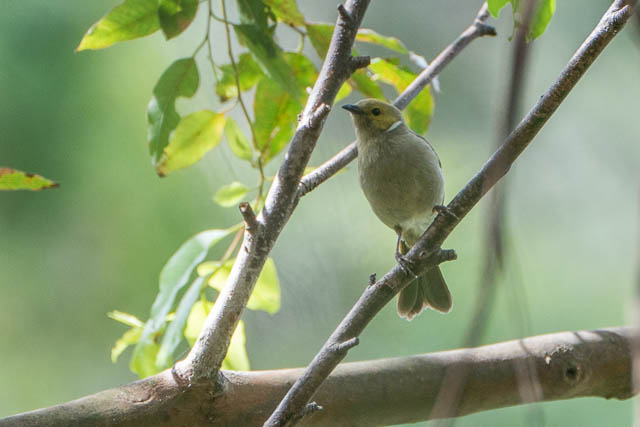
And a New Holland Honeyeater and a Willie Wagtail in full song –
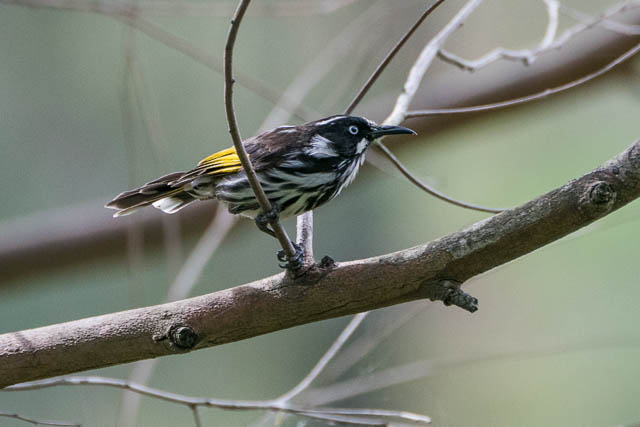
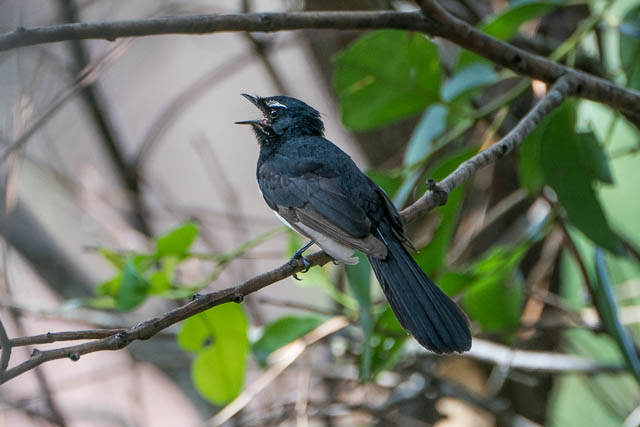
in between my wanderings, I made my way past the viewing point where the Rail had been observed the day before. I was eventually lucky. Around 9:30 am I saw a Rail, a Buff-banded Rail foraging on the far bank. I was able to get a few photos, and then I observed a second one a little higher up on the bank. More photos. They seemed to be a pair of Buff-banded Rails.
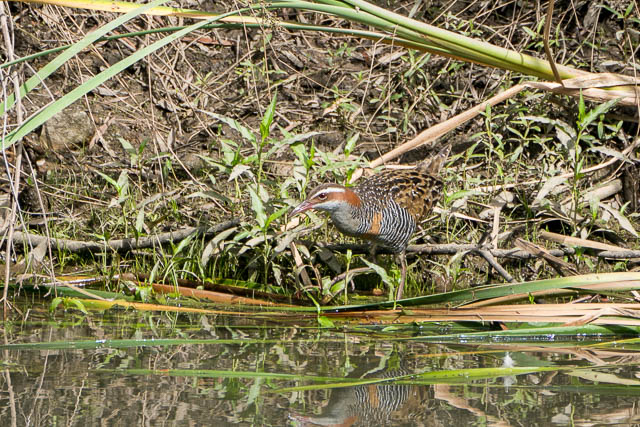
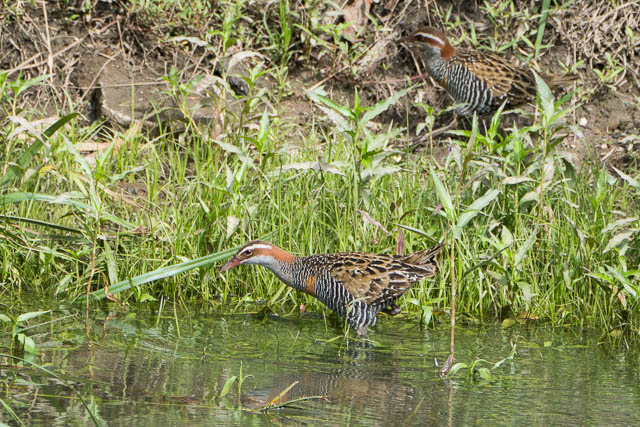
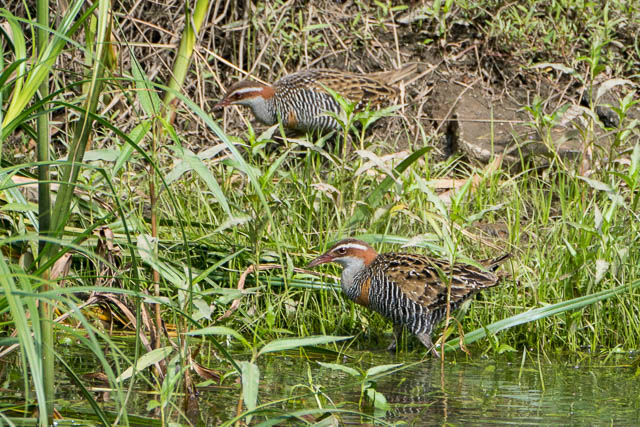
No sign of any Lewin’s Rail. Could the observers the day before been mistaken. Possibly? Or perhaps there is one at the Wetlands, but I had not been able to see it? More observing is needed.
Mission accomplished, so I headed off. I went via the wasteland near the Container Depot. Some Bulbuls were active here – grabbing insects –
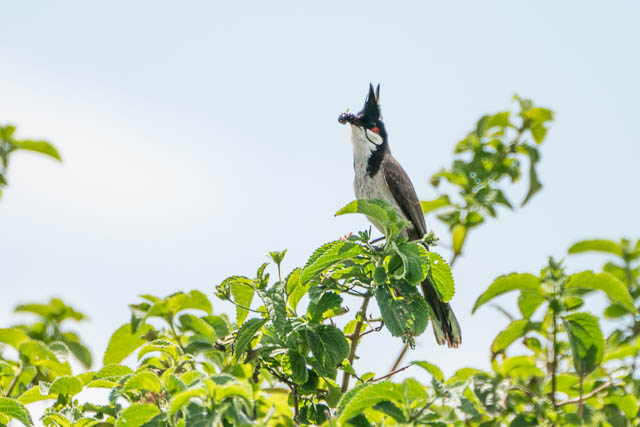
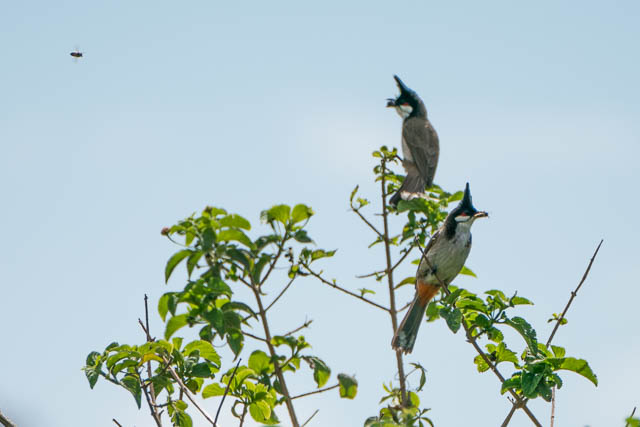
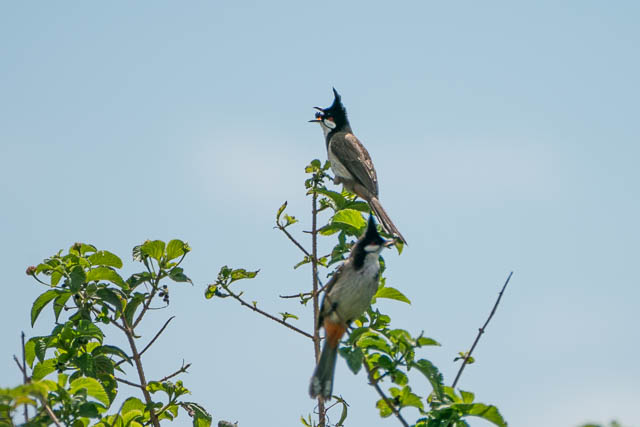
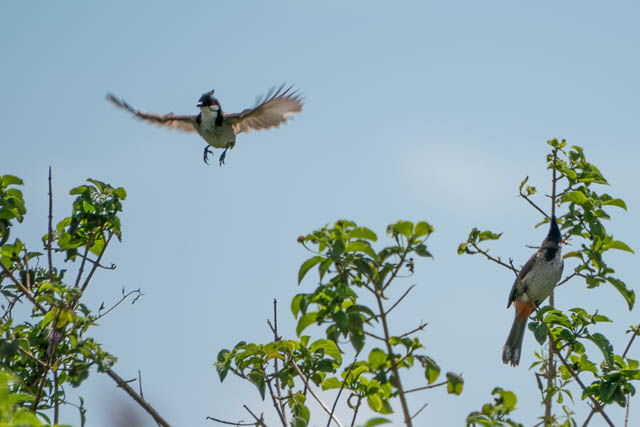
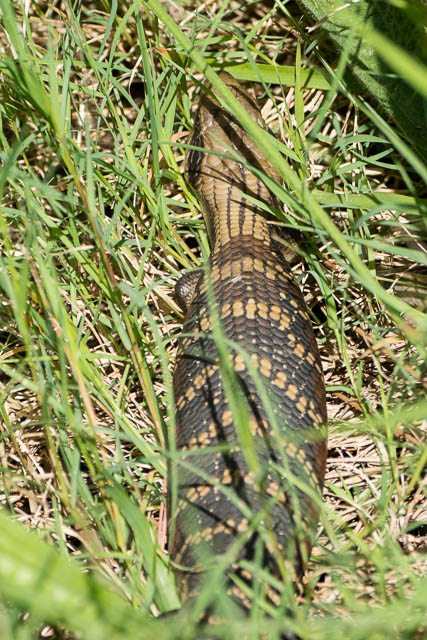
Back at Tempe Reserve, in the mudflats I observed a Striated Heron. It was perhaps the same one I had seen a long way up the Cooks River the day before. Anyway it was searching for food in the mudflats in exactly the same manner –
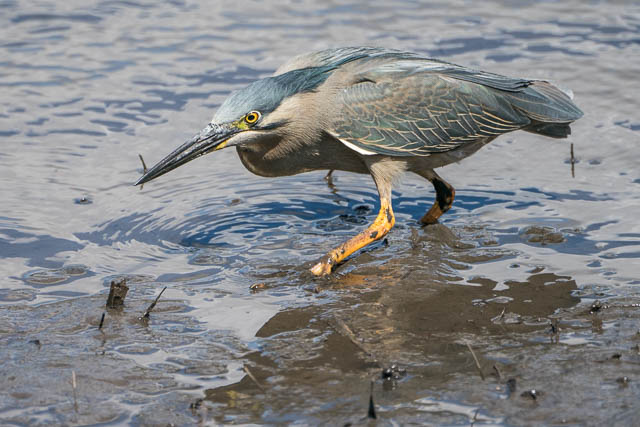
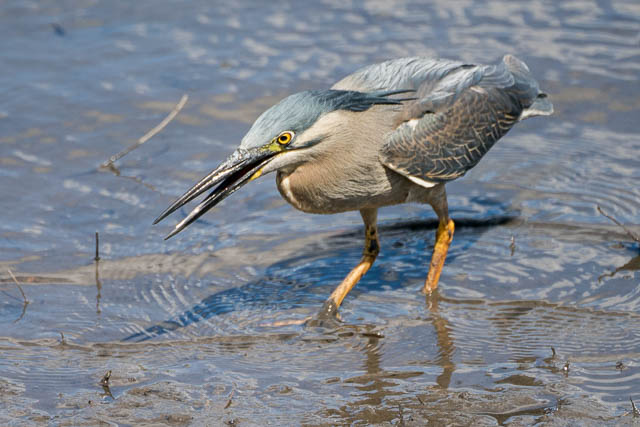
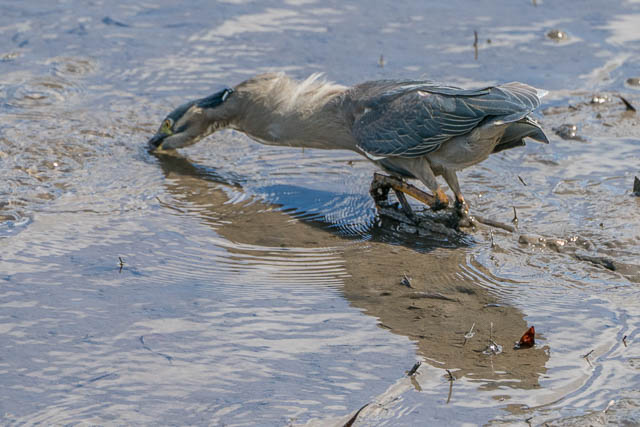
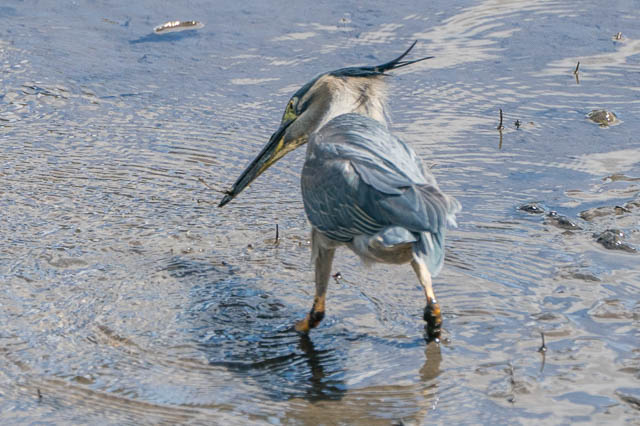
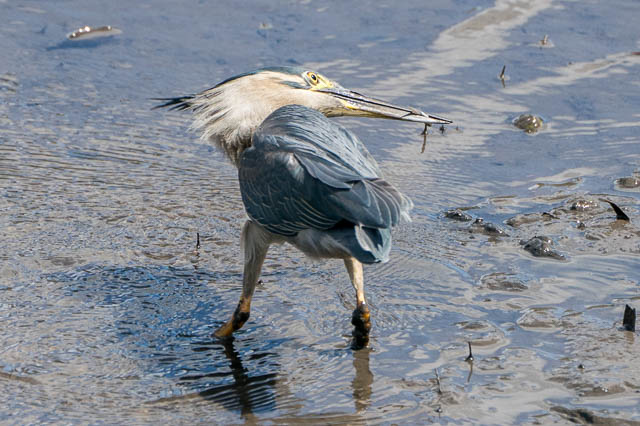
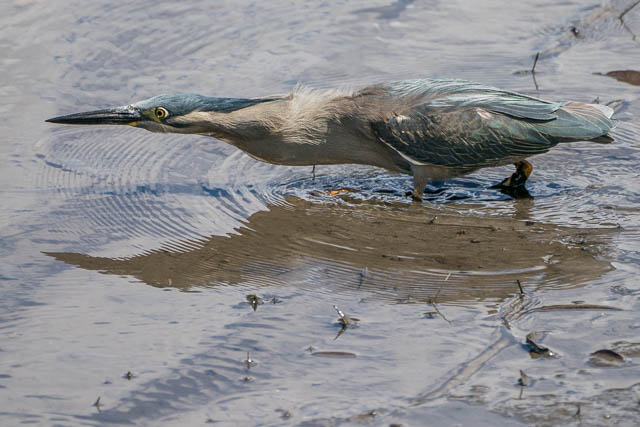
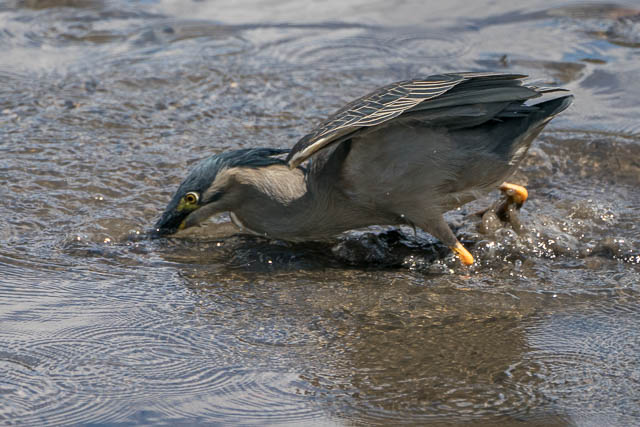
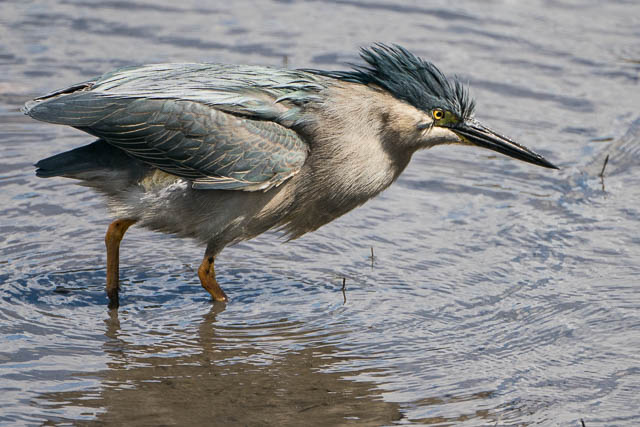
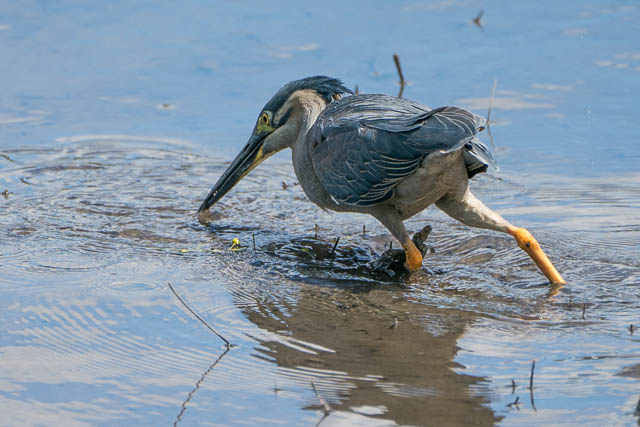
Lastly, I observed a much more common (in these parts at least) White Faced Heron. It too was searching for food and was also interesting to watch –
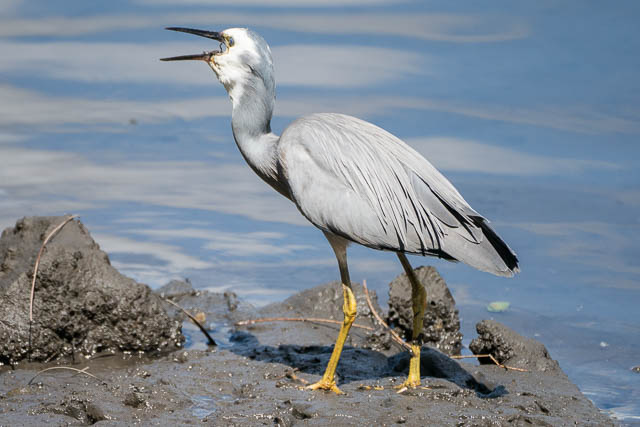
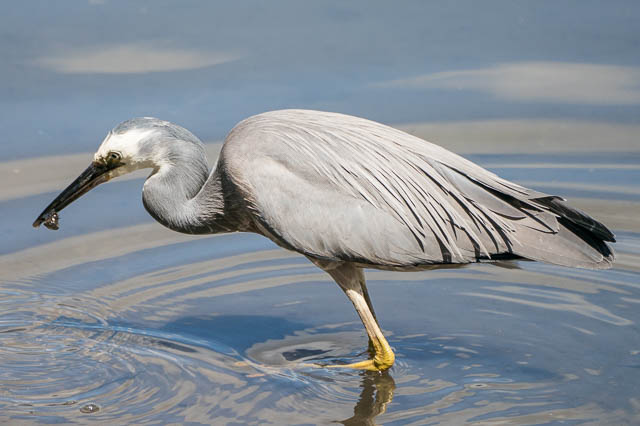
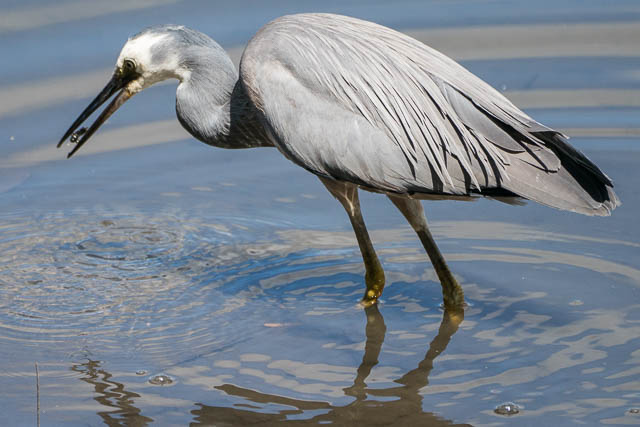
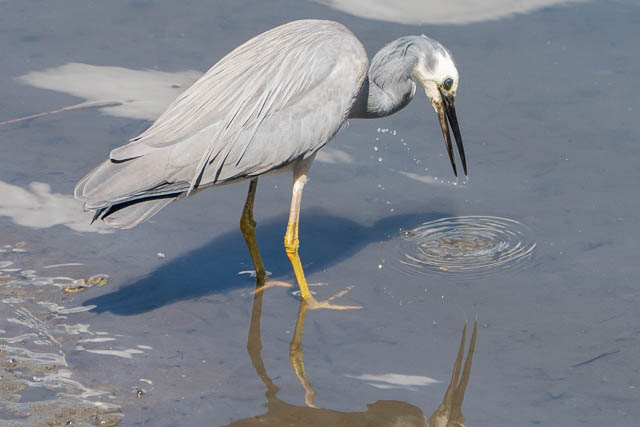

Stunning pics David.
Spotted Pardalotes do build tunnels into level ground – but that tunnel looks too damp.
If there are Lewins Rails around you are much more likely to hear then them
than see them – most common call sounds likes pebbles being clicked together –
and a getting a pic will be a challenge.
Thanks. There were two tunnels about 1 m apart – on the track. Will have another look at them in the future. The ground there has been compacted, so it may be too hard for tunnelling? They do have other tunnels on a rocky bank not that far away. Nesting on the track is not a good idea with kids fanging about on quad bikes.
Did you see what I think is a Lewin’s Rail in my photos from Royal National Park in September? See this post. It did take some patience to get the photo.
Yep that is a Lewins Rail
Your striated heron may be one of the two that are nesting at Gough Whitlam Park currently, or it may be their offspring from a late 2016 breeding event. See my recently uploaded doco on this …
https://www.youtube.com/watch?v=9eu_01Syyj4&t=311s
“Striated herons (Butorides striata), are one of the world’s most widespread heron species. They’re found in South America, Africa, Asia, and Australia, and on islands in the Pacific and Indian oceans. In the history of science, these birds have a rare distinction: they were one of the first organisms described and named – by Carl von Linné himself – way back in 1758, in the book that initiated the modern system of identification and classification called binomial nomenclature.
“Shot at Gough Whitlam Park, on Cooks River, in inner south-west Sydney, this is the story of a breeding event by a pair of striated herons. It includes fascinating scenes of nesting, chick rearing, threat display, hunting, and the juvenile heron learning to fend for itself.”
Nice video – thanks for making the observations.